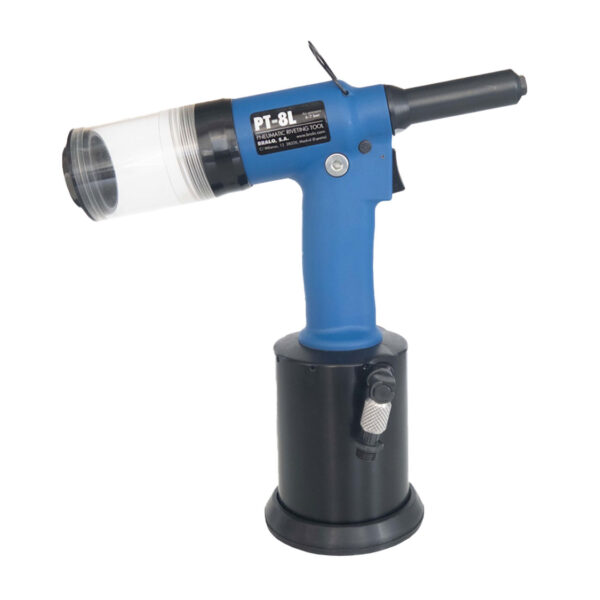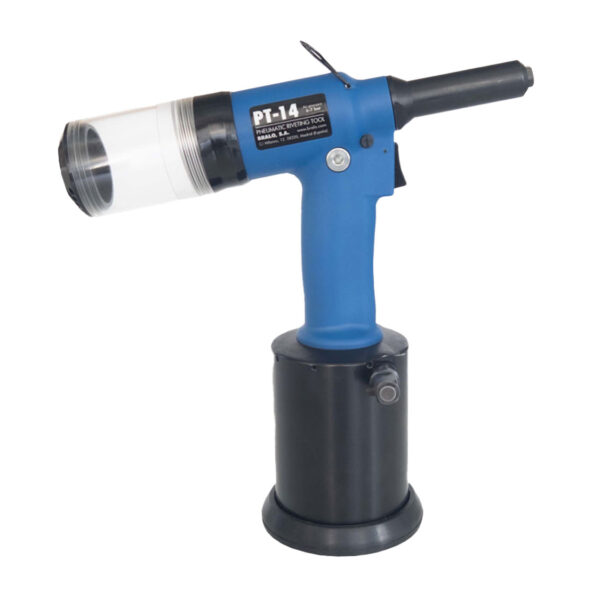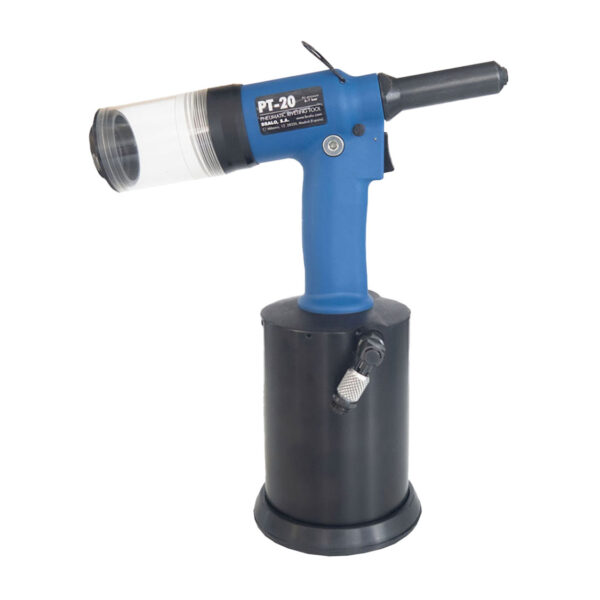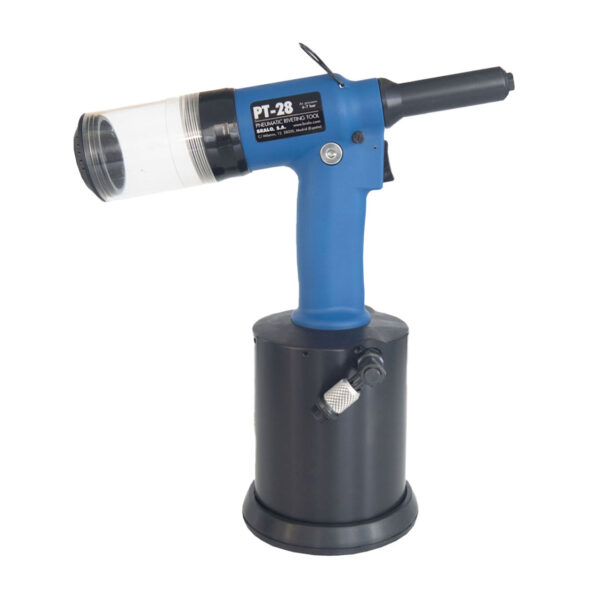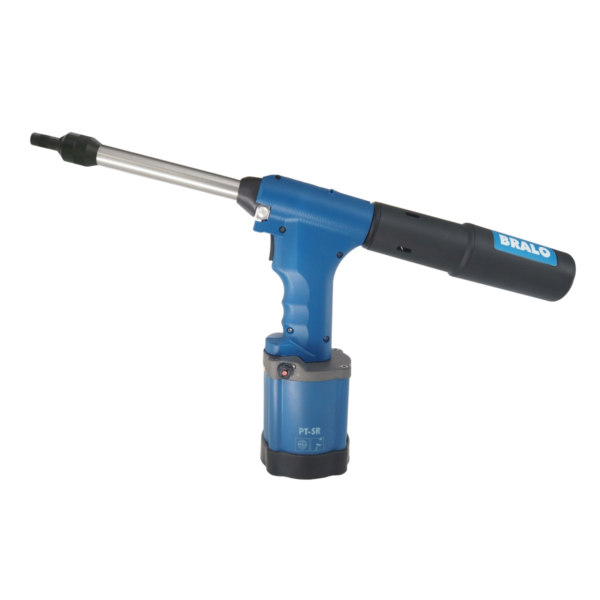PNEUMATIC
RIVETER TOOLS
FOR RIVETS
The new BRALO PT range offers maximum reliability and performance in demanding industrial environments. With a forged aluminum body, springless design, and low air consumption, it guarantees durability, ergonomics, and productivity. All this with low and simple maintenance.
BRALO’s PT range for rivets consists of five riveting machines with different capacities, adapting to our customers’ needs.
BRALO oleo-pneumatic riveting machines are professional machines that use compressed air to maximize riveting force, solidly join various materials, and achieve high-precision riveting.
BENEFITS OF THE PNEUMATIC RIVETER
Bralo’s pneumatic riveters adapt to the needs of the market and different industries, with their most notable features:
- LIGHTWEIGHTNESS AND STRUCTURAL STRENGTH, as they are manufactured from forged aluminum, a high-quality, lightweight material.
- MAXIMUM RELIABILITY, thanks to its simplified, high-precision design with state-of-the-art parts that avoid complex assemblies.
- FASTER CYCLES AND LESS WEAR. The pneumatic piston recovery system and springless construction achieve higher speeds and less wear on the parts.
- LOWER COMPRESSED AIR CONSUMPTION. These riveters operate at maximum power with an efficient force delivery, generating less pressure and therefore lower air consumption.
- MINIMUM MAINTENANCE. Built to last, easy to maintain on site.
- HIGH PERFORMANCE IN RIVETING FORCE TRANSMISSION. Because our machines operate below their maximum capacity, the internal mechanisms are protected and ensure durability.
- SAFETY AND COMFORT. The transparent stem collector improves visibility (can be supplied with a stem collector for long stems) and operator comfort thanks to its adjustable outlet.
HOW DO PNEUMATIC RIVETERS WORK?
- The PT range of pneumatic riveters is designed by BRALO’s R&D team, seeking to simplify components and using high-quality materials to ensure high reliability, robustness, and low and simple maintenance.
- This new tool ranges operates with an air-powered piston, which in turn exerts pressure on the hydraulic oil that generates the pulling force of the riveting piston. The air used is subsequently recirculated to force the pneumatic piston back, restarting the cycle.
- In the riveting process, the appropriate nozzle is chosen based on the rivet to be used. More than 50 nosepieces are available.
- First, the rivet stem is inserted into the nose piece, and the rivet body is placed in the application hole.
- After properly placing the tool and rivet in the application, the trigger is activated to allow the jaws to pull the stem, which is inserted into the rivet body. The rivet body deforms, filling the hole and creating the clamping force between the pieces to be joined.
- When resistance is encountered, the stem breaks, exits through the mandrel collector, and the rivet is firmly secured.


